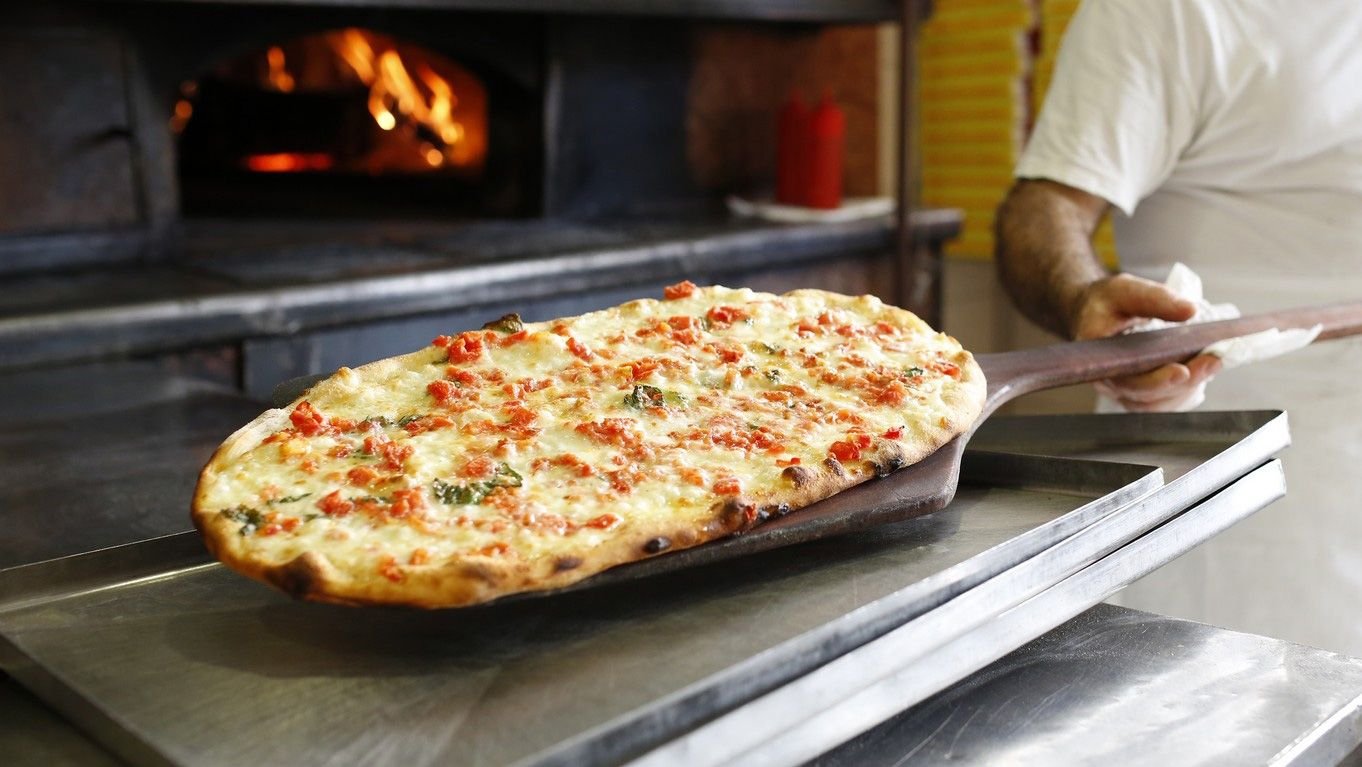Italy, the birthplace of pizza, boasts a rich tapestry of regional variations that reflect the country’s diverse culinary traditions and local ingredients. While Neapolitan and Roman pizzas are perhaps the most renowned, other regions have developed their own distinctive styles. This article explores some of these regional variations, including Sicilian, Pugliese, and others, highlighting their unique characteristics and cultural significance.

Sicilian Pizza
Description and Characteristics
Sicilian pizza, known locally as “Sfincione,” is a thick-crust pizza that is typically rectangular and features a spongy, bread-like base. Unlike the thin, crispy crusts of Neapolitan or Roman pizzas, Sicilian pizza has a robust and hearty texture.
- Crust: The dough for Sicilian pizza is made with more water and oil, resulting in a thick, fluffy crust. It is often pre-baked before toppings are added, which helps achieve a crisp bottom while maintaining a soft interior.
- Toppings: Traditional Sicilian pizza is topped with a tomato-based sauce, onions, anchovies, and breadcrumbs. Cheese, typically a hard cheese like Pecorino Romano, is added sparingly or not at all. Modern variations may include more cheese and different toppings, but the classic version emphasizes simple, bold flavors.
- Baking: Sicilian pizza is baked in a square or rectangular pan, which contributes to its characteristic shape and allows for a higher rise in the dough.
Cultural Significance
Sicilian pizza reflects the island’s history and its blend of cultural influences. The use of anchovies and robust flavors showcases the Mediterranean palate, while the thick, bread-like base points to the region’s bread-making traditions. Sicilian pizza is often enjoyed as a street food, embodying the island’s vibrant and accessible culinary culture.
Pugliese Pizza
Description and Characteristics
Pugliese pizza hails from the Puglia region in southeastern Italy. This style of pizza is known for its use of fresh, locally sourced ingredients and a focus on simplicity.
- Crust: The crust of Pugliese pizza is typically thin and crisp, similar to Roman pizza. It is made using high-quality local flour, water, yeast, and salt.
- Toppings: Common toppings include tomatoes, onions, capers, olives, and local cheeses like burrata or mozzarella. The use of fresh, seasonal vegetables and high-quality olive oil is a hallmark of Pugliese pizza.
- Baking: Pugliese pizza is traditionally baked in a wood-fired oven, which imparts a smoky flavor and ensures a crispy crust.
Cultural Significance
Pugliese pizza highlights the region’s agricultural abundance and commitment to fresh, seasonal ingredients. The simplicity of the toppings allows the natural flavors of the produce to shine, reflecting the Pugliese philosophy of “cucina povera” or “peasant cooking,” which emphasizes making the most of humble ingredients.
Other Regional Variations
Ligurian Pizza (Focaccia al Formaggio)
In the Liguria region, focaccia al formaggio, or cheese focaccia, is a beloved variation of pizza. This dish features a thin, double-layered dough filled with soft cheese, such as Stracchino.
- Crust: The dough is thin and pliable, similar to a very thin pizza crust.
- Toppings: The focus is on the cheese filling, which melts and creates a creamy texture. Sometimes herbs like rosemary are added.
- Baking: It is baked in a wood-fired oven until the dough is golden and the cheese is bubbly.
Roman Pizza al Taglio
Although mentioned previously, it’s worth noting that Pizza al Taglio’s variations across Rome’s neighborhoods reflect local preferences and innovations.
- Crust: Ranges from thick and airy to thin and crispy.
- Toppings: Diverse, from traditional margherita to more innovative combinations like zucchini and shrimp.
- Baking: Typically baked in large rectangular pans and sold by weight.
Pizza Napoletana
Neapolitan pizza, while widely known, varies within Naples itself. True Neapolitan pizza is governed by strict guidelines set by the Associazione Verace Pizza Napoletana (AVPN).
- Crust: Soft and chewy with a high edge (cornicione).
- Toppings: Classic Margherita (tomato, mozzarella, basil) or Marinara (tomato, garlic, oregano).
- Baking: Must be cooked in a wood-fired oven at around 485°C (905°F) for no more than 90 seconds.
Tuscan Schiacciata
In Tuscany, schiacciata, a type of flatbread, is a popular variation that can be savory or sweet.
- Crust: Similar to focaccia, it’s thicker and often infused with olive oil.
- Toppings: Can include herbs, salt, and sometimes grapes for a sweet version.
- Baking: Baked until golden and crispy on the outside but soft inside.
Conclusion
In conclusion, Italian pizza is a culinary treasure trove, with each region offering its unique take on this beloved dish. From the thick, hearty crust of Sicilian pizza to the fresh, simple toppings of Pugliese pizza, these regional variations reflect Italy’s diverse landscape, rich history, and deep culinary traditions. Each style, with its distinctive ingredients and preparation methods, tells a story of the region’s culture and heritage, inviting pizza lovers to explore the rich tapestry of flavors that Italian pizza has to offer. Whether enjoyed on the bustling streets of Rome or in the rustic countryside of Puglia, Italian pizza continues to delight and inspire with its endless variety and timeless appeal.











66b ios Hiện nay, nền tảng cung cấp đa dạng hình thức giải trí khác nhau để phù hợp với mọi nhu cầu của anh em. Ngoài việc được tham gia vào các danh mục truyền thống như Casino, Thể Thao, Nổ Hũ thì bạn còn được khám phá nhiều loại hình đặc sắc mới như Đá Gà, Bắn Cá.